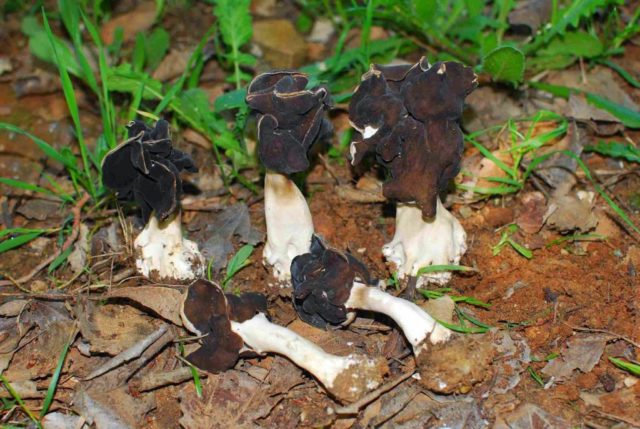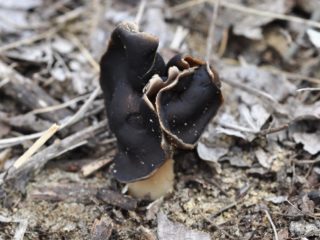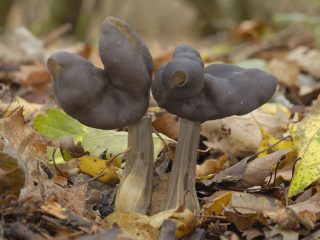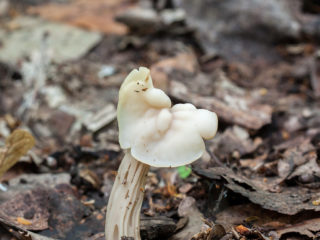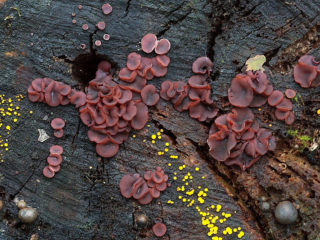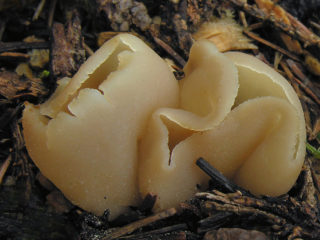Content
Black Lobed (Helvella atra) is a mushroom with an original appearance, belonging to the Helvella family, from the genus Lopastnikov. Other scientific name: Leptopodium nigra.
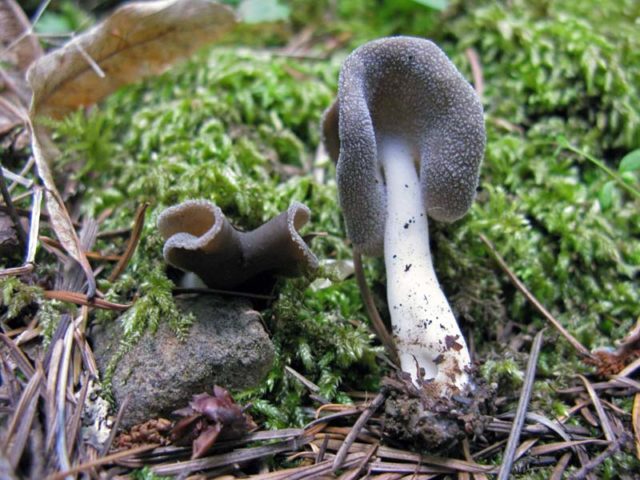
Black lobed grass is extremely rare in our forests.
What does a black blade look like?
The fruiting bodies that have just appeared have the appearance of a kind of saddle on a stalk or a broken disc. The hat has a rounded fold along the center line, whose outer corners are noticeably raised above the horizontal. The halves of the cap are strongly lowered down almost in a straight line or slightly rounded inward, the edge is often attached to the stem. As it develops, the surface bends in bizarre waves and changes to a shapeless, lumpy appearance. The edges can be noticeably turned outward, exposing the inner surface, or, conversely, hug the leg with a kind of cape.
The surface is matte, dry, slightly velvety. From gray to dark gray with a brown or bluish tint and shapeless blue and black spots. The color may darken to brown-black. The inner surface, the hymenium, is smooth or slightly wrinkled, with pronounced bristles, brownish or gray in color. The pulp is brittle, loose, tasteless. Its color is transparent gray, like wax. The diameter can range from 0.8 to 3.2 cm. The spore powder is white.
The leg is cylindrical, widening towards the root. Dry, pubescent in the upper part, with longitudinal stripes. The color is uneven, noticeably lighter at the base. Color ranges from beige, gray-cream to dirty bluish and ocher-black. The length ranges from 2.5 to 5.5 cm, diameter - 0.4-1.2 cm.
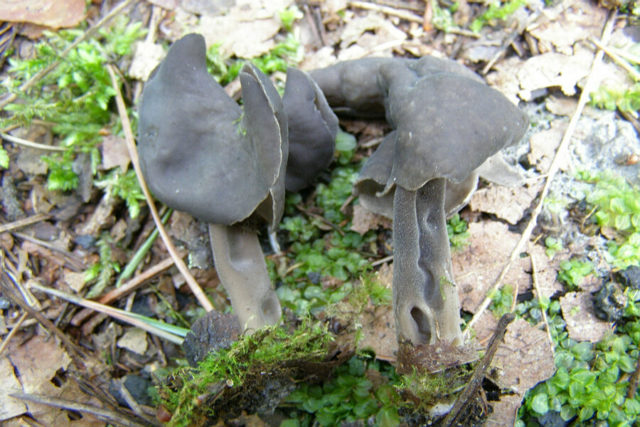
Legs are often twisted, with shapeless dents
Where do black loafers grow?
Distributed in Japan and China, it was first found and described there. Then it was discovered on the American continent and in other regions of Eurasia. In Russia it is extremely rare; seeing it is a great success.
Prefers deciduous forests and birch forests. Sometimes its colonies are found in pine forests and spruce forests. Grows in large and small groups, with individual mushrooms freely located. Loves dry places, sandy soils, grassy meadows in gardens and parks. The mycelium bears fruit from June to October.
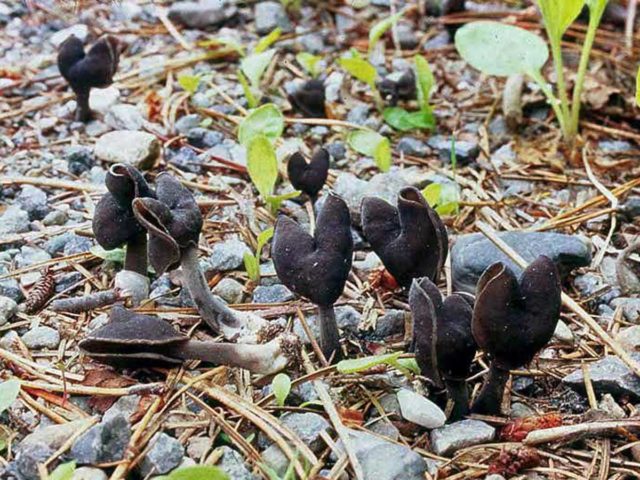
Black lobedweed also feels great in rocky areas
Is it possible to eat black lollipops?
Black lobed mushroom is classified as an inedible mushroom due to its low nutritional value. There is no scientific data on its toxicity. It can be confused with other representatives of the Helwell species.
The pitted lobe. Inedible.It has larger sizes, a fleshy thick leg.
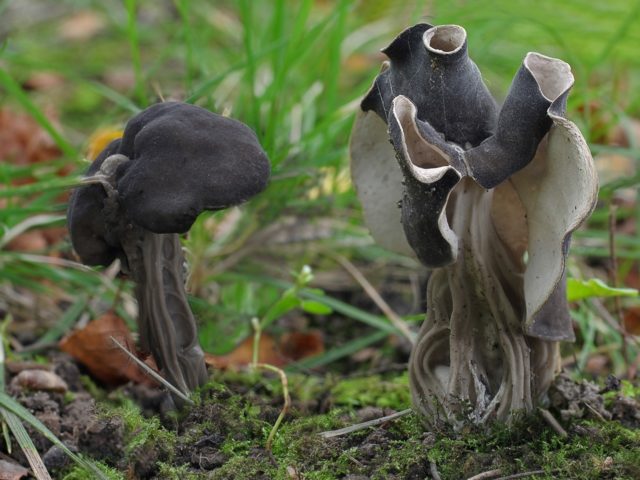
The legs of these fruiting bodies have a characteristic cellular shape.
Lobed lobster. Inedible. It is distinguished by a noticeably curled up edge of the cap.
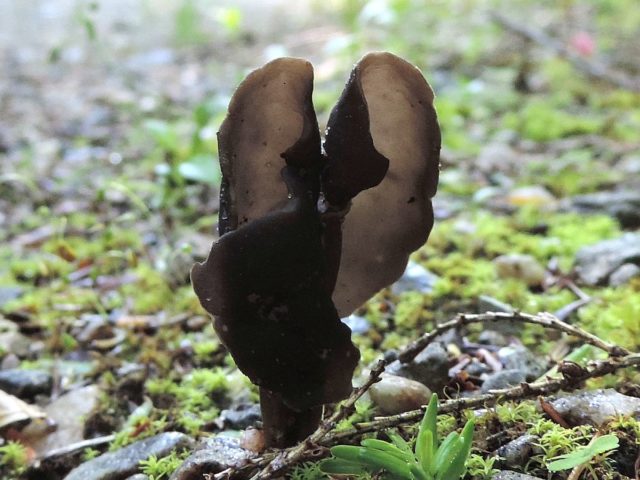
The flesh of the cap is so thin that it is translucent
White-legged lobe. Inedible, toxic. It has a pure white or yellowish leg, a light-colored hymenium and a blue-black cap.
Conclusion
The black lobed is an interesting rare mushroom from the Helwellian family, a fairly close relative of the Arctic fox. Inedible, according to some sources toxic. It has extremely low nutritional value, so it is not worth risking your health. In Russia, several colonies of this fungus were found in the Novosibirsk region. Its habitat is China, Europe, North and South America. It grows in deciduous and sometimes coniferous forests from early June to mid-October.
